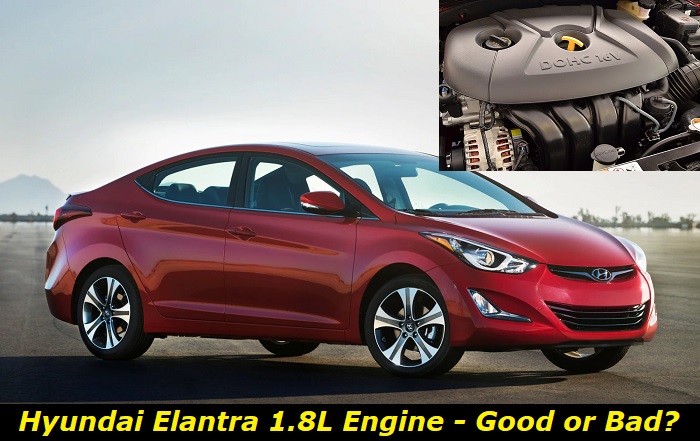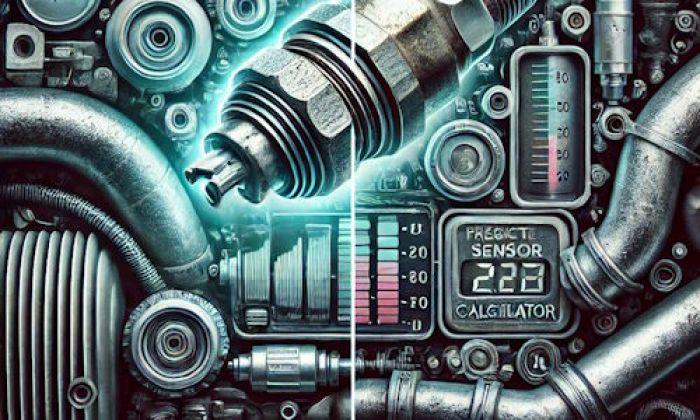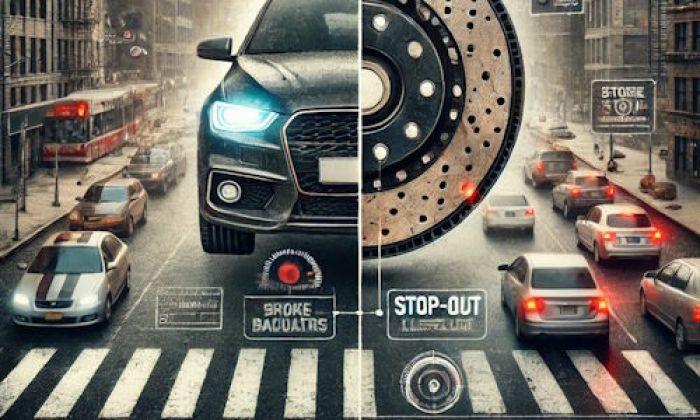Hyundai vehicles are seen as good all-around performers with user-friendly controls, sleek designs, and features tailored for everyday drives. The South Korean brand is also well known for producing highly-capable and reliable engines amid their affordable price range.
The brand has always made it in the top 10 list of the most reliable cars in the world over the past few years. However, it seemed to have dropped the ball when it came to the 1.8L engine it produced between 2010 and 2015 for the fifth-generation Elantra. In this article, we will show you the reason behind the infamy of this power plant.

Key facts and my opinion about the engine
- Production years: 2010-2016
- Average lifespan of G4NB: 180,000-200,000 miles
- Fuel supply type: port injection
- Power range: 150 hp
- Fuel efficiency: good
- Engine block material: aluminum
- Engine reliability score: medium
- The most common problems: cylinders warping, catalytic converter is too close to the block, oil consumption, very thin timing chain, various leaks.
Durability of the 2010-2015 Hyundai Elantra 1.8L Engine
With the problems it is known for, the life expectancy of a Hyundai Elantra 1.8L G4NB engine made between 2010 and 2015 is pretty low. There have been serious complaints about this engine as early as its first 10,000 miles so you'd be extraordinarily lucky enough to get past Hyundai's promised 200,000 miles with it.
One thing's for sure though, you might stretch its life more than 100,000 miles if you catch the major issues early on and have them fixed in a timely manner.
Known Problems of the 2010-2015 Hyundai Elantra 1.8L Engine
Based on the numerous complaints of the unfortunate souls affected by the major issues of the 2010-2015 Hyundai 1.8L engine, these are the problems it is commonly known for:
1. Metal Shavings Clogging the Crankshaft Oil Passages
In 2015, Hyundai and Kia recalled around 1.2 million cars they produced in the US due to potential engine failures. Based on their filings with the National Highway Traffic Safety Administration (NHTSA), many of their vehicles produced between 2010 and 2013 had the tendency to have metal shavings left out during the machining of the engine crankshaft and crankpins during assembly.
This problem exposes the engine to lubrication issues due to the blockage of its oil passages, and it could also lead to the premature wear of the connecting rod bearings, which we will tackle separately in the next part.
The most common symptom of this problem is a knocking or ticking noise produced during the operation of the engine. This happens because the metal shavings can block oil passages, which will then cause a decrease in oil pressure. When this happens, the engine will start to make knocking and ticking noises as it tries to operate without enough lubrication.
The other symptoms include a loss of power and decreased fuel economy. In some cases, the engine may stall or fail to start altogether. If you notice any of these signs, it's important to have your car checked by a qualified mechanic as soon as possible.
Aside from the confirmed mishap of Hyundai during the assembly process, the issue may stem from a damaged or worn oil pump, incorrect oil viscosity, or even just using low-quality motor oil.
If you suspect that your car has metal shavings in the crankshaft oil passages, the first thing you should do is listen closely for any engine knocks or ticks. This is usually the most obvious symptom of the problem. If you hear any unusual noises coming from the engine, it's a good idea to have it checked out as soon as possible.
As an alternative, you can try doing a compression test. This will help you determine if there's any blockage in the oil passages, as well as check for any other engine problems.
If you confirm that your car does have metal shavings in the crankshaft oil passages, the next step is to have it fixed as soon as possible. The best way to fix this problem is to rebuild or replace the engine entirely if it already led to major damage in a lot of its internal components. This may seem like a drastic measure, but it's really the only way to be sure that all of the metal shavings have been removed.
If you don't want to replace the engine, you can have its oil passages flushed with a high-pressure washer. This may be able to remove some of the blockages, but it's not a guarantee. Another option is to have the engine machined again. This will help remove any loose metal elements and hopefully fix the problem for good.
Whichever route you decide to take, it's important to have the problem fixed as soon as possible by a qualified mechanic. If left untreated, the resulting lubrication issues can bring about serious engine damage.
2. Connecting Rod Bearing Premature Wear
The lubrication problem brought about by the leftover metal shavings can also expose unsuspecting users of the 2010-2015 Hyundai Elantra 1.8L engine to the premature wear of their vehicle's connecting rod bearings.
When these bearings are not receiving the right amount of lubrication, they will start to generate a lot of heat. The increase in temperature will cause the connecting rod bearings to expand and this can cause them to suffer from extensive damage.
The main symptom you will experience when your Hyundai Elantra 1.8L engine's connecting rod bearings are damaged is an unusual noise coming from the engine area. This noise is caused by the metal-to-metal contact between the connecting rods and the crankshaft as a result of the lack of lubrication.
If you hear this noise coming from your vehicle, it is important that you take it to a mechanic as soon as possible to have it checked out. If the problem is not diagnosed and fixed early, it could lead to more extensive engine damage that will be much more expensive to repair.
There are a few different things that can cause the connecting rod bearings in the Hyundai Elantra 1.8L engine to become damaged. The most common cause is the abovementioned manufacturing defect where there are metal shavings left behind from the machining process. These shavings can get into the oil pan and start to circulate through the engine oil.
Another possible cause of damage to the connecting rod bearings is using low-quality engine oil or not changing the oil often enough. Over time, the oil will break down and will no longer be able to properly lubricate the engine components. This can lead to the bearings becoming damaged from the increased friction.
If you want to avoid having to deal with damage to your connecting rod bearings, there are a few things you can do. Make sure that you always use high-quality engine oil and that you change it according to the recommended schedule in your owner's manual. It is also a good idea to have regular maintenance checkups done on your vehicle so that any potential problems can be caught early.
If the damage to your connecting rod bearings is already done, the only thing you can do is replace them. This is a fairly expensive repair, but it is much cheaper than having to replace an entire engine. Be sure to take your vehicle to a reputable mechanic who has experience with this type of repair.
Replacing the connecting rod bearings is a fairly involved process. First, the engine must be completely disassembled so that the damaged bearings can be removed. The crankshaft will also need to be inspected for damage and replaced if necessary.
Once the old bearings are out, the connecting rods will need to be cleaned and inspected for damage. New bearings will then be placed on the rods and the engine will be reassembled.
3. Faulty Fuel Injection System
The most common symptom of a fault in the fuel injection system is engine misfires, which also troubled many Elantra owners from 2010 to 2015. This is primarily due to the injector not directing enough fuel into the cylinder, causing the air-fuel mixture to be too lean. Lean mixtures can cause the engine to run rough and may even cause it to stall.
Other symptoms of a faulty injector include poor fuel economy and increased emissions. So, if you notice either of these symptoms, it's important to have your vehicle checked by a qualified mechanic as soon as possible.
There are several things that can cause an injector to fail. One of the most common is simply wear and tear. Over time, the moving parts in the injector can start to wear down, causing it to become less effective. Eventually, this can lead to complete failure.
Another common cause of injector failure is contamination. If dirt or other debris gets into the injector, it can cause it to clog up and not work properly. This is why it's important to keep your fuel system clean and free of contaminants.
Finally, faulty electrical connections can cause an injector to fail. If the wiring to the injector is loose or damaged, it can cause the injector to malfunction.
If your Hyundai Elantra is experiencing problems due to a faulty injector, there are several possible solutions. The most obvious solution is to simply replace the injector if simply cleaning it is no longer viable. This can be done by a qualified mechanic and it should solve the problem. During this time, it would be good to check the quality of the fuel pump and fuel rails as well since they make up the fuel injection system of your vehicle, too.
Hyundai 1.8L Engine Key Specs
The 1.8-liter naturally aspirated four-cylinder gasoline engine with 148 hp and 131 lb-ft (177 Nm) of torque (G4NB) is standard across all Elantra body styles. The engine, which comes standard with a six-speed manual transmission and an optional six-speed automatic, meets the basic needs of typical compact car buyers but does not transform the Elantra into a sporty compact car. The 1.8L engine provides a 0 to 60 mph sprint time of around 10 seconds, making the Elantra relatively slow for its class when compared with it its direct rivals in the market.
With all the hullabaloo about the 1.8L engine, it would have been great if Hyundai at least made up for its known problems with a pretty decent performance. Unfortunately, the power unit failed miserably in this department, too.
Conclusion
It's bad enough that the 2010-2015 Hyundai Elantra 1.8L engine is underperforming when it comes to certain aspects like its power and acceleration. Add to that the major engine issues that make it prone to breaking down, and it's definitely something that you should steer clear of like the plague.
However, if you already happen to own the unit, be sure to keep a lookout for the key symptoms of its major problems to save yourself from expensive repairs later on.
About the authors
The CarAraC research team is composed of seasoned auto mechanics and automotive industry professionals, including individuals with advanced degrees and certifications in their field. Our team members boast prestigious credentials, reflecting their extensive knowledge and skills. These qualifications include: IMI: Institute of the Motor Industry, ASE-Certified Master Automobile Technicians; Coventry University, Graduate of MA in Automotive Journalism; Politecnico di Torino, Italy, MS Automotive Engineering; Ss. Cyril and Methodius University in Skopje, Mechanical University in Skopje; TOC Automotive College; DHA Suffa University, Department of Mechanical Engineering






Add comment